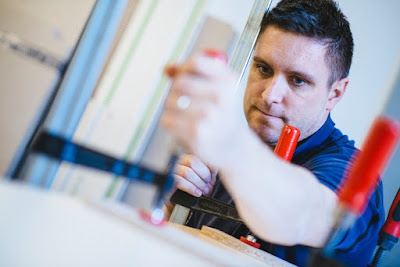Buying a table saw can be a big decision. Firstly, a table is a sizeable investment compared to most of your other tools in the workshop. Table saws have a long life, so you will want to happy with your choice because there is a good chance you will have it for the rest of your life. They also take up a fair amount of space in your workshop, so you want your table to be a hard-working unit that you enjoy using.
There are many brands on the market, but Timbecon chooses to stock Sherwood table saws. The UK-based company is well-known for its high quality cutting tools and machines. They invest heavily in R&D and provide tools for drilling, milling, sawing, threading, countersinking and reaming.
1. Power
Before you make your purchase, think about your requirements for power. A hobbyist with small project pieces won’t need the same level of power that a commercial workshop will need. For example, a 2-inch thick piece of hardwood should be fine on a 1.5 to 2 horsepower table saw but if the hardwood is any thicker, then a 3.5 to 5 horsepower motor is required.2. Safety Features
Look at the safety features available on the table saw before you purchase. Being able to operate the on/off switch with your knee, hip or foot allows you to keep both hands on your piece which may save a finger but also save your work from unfortunate slips.Being able to adjust the height of your table saw is not just important for short or tall people. An easily adjustable table allows you to change the height with every project. Working at the ideal height means you are less at risk of back, neck and repetitive strain injuries.
If you haven’t used a table saw regularly, then the safest option is to go with one that has a left blade tilt rather than right. Bevel and angle cuts require the saw to be angled from its usual 90-degree position.
A No-Volt Release (NVR) switch makes sure your table saw doesn’t automatically startup when the power is restored following an outage. A serious injury could occur if you were working or leaning against your table saw and it started without warning.
Kickback can cause injuries but you can minimise these with a table saw that uses a riving knife instead of a splitter as the splitter can be removed from the machine. The 10in Standard Cabinet Saw boasts a quick release riving knife system.
3. Dust Collection
Having a table saw that collects the dust isn’t just a nice feature for keeping the workshop clean. Dust extractors reduce the quantity of sawdust in the air which helps with air quality. The less wood dust in the air, the less you are breathing in. The Sherwood models have different dust extractors depending on the type of saw.The Sherwood 10in Contractor Saw has a dust port built into the top part of the base to ensure maximum dust extraction.
The Sherwood 10in Hybrid Saw provides a 4in dust outlet at the rear of the cabinet base.
The Sherwood 10in Standard Cabinet Saw has a 4in dust outlet built into the rear of the cabinet base.

